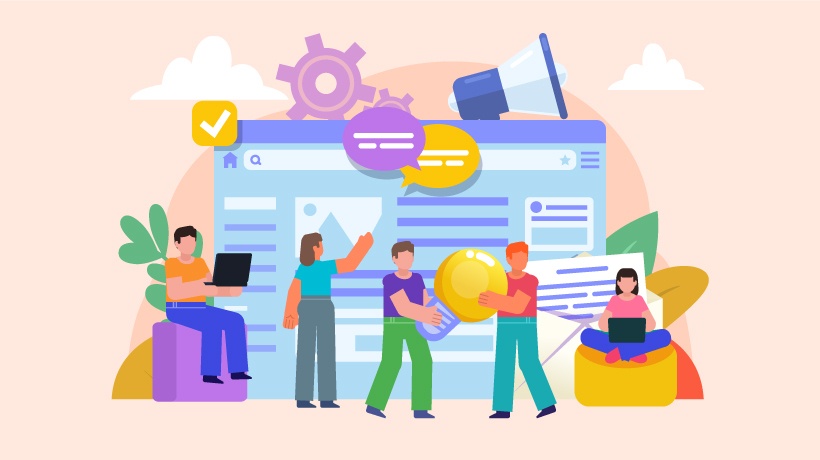Features To Improve Usability Of LMSs
A poor understanding of how teachers and students really work while creating a Learning Management System is one of the main eLearning challenges.
1. Task Tracker
For both students and teachers, it’s hard to set up and track the progress of dozens of tasks. Task tracker is a smart tool to help distribute the study load/workload properly and manage time. A task tracker would be a good helper for senior students when working on their coursework or dissertations. Teachers, who are now overwhelmed by the number of tasks that should be done and the number of assignments to be reviewed, would be excited to bring all the "to-dos" together in one place.
2. Social Network Integration
To reach a bigger audience and increase the efficiency of communication between universities/schools and students, I recommend integrating a Learning Management System with social networks.
Duplicating university-, college-, or school-wide announcements to the social networks you choose for your educational establishment is a good option to cover a larger audience, increasing the chances of being heard. Social networks [1] can also become a good helper for future students during higher education admission campaigns as an alternative to website-based announcements.
3. Progress Analytics
In-built student analytics is an easy option to check students’ attendance, monitor progress, and manage grades. This feature could be implemented in many forms from the dashboard to the grade book, giving the possibility to track students’ progress in one place without switching between tabs.
4. Access To A Knowledge Base
Free access to online libraries [2] and scientometric databases (Elsevier, Scopus, Springer, Socrates-Impulse, etc.) is a great benefit for students to keep the relevant resources handy.
5. Mobile Compatibility
Guided by a mobile-first approach, every web platform should be visible on mobile devices. Talking about sophisticated and high-functioning platforms, which is what Learning Management Systems are, adaptive design is not enough. LMS providers should either use responsive design to ensure a good User Experience or create a separate version for mobile platforms.
To build a mobile version of an LMS, usability research based on using similar platforms should be performed, taking into account the differences in the usage of devices, including their basic features and differences in usage.
6. Internal Messaging
A possibility for students and teachers to communicate without leaving the Learning Management System is a good way to stay focused and avoid distractions. Besides, having all the messages concerning your studies in one place minimizes the risks of missing something important and discovering it in a spam folder a year later.
7. Customization For Kids
Although today’s children have gained significant proficiency in using the internet and gadgets, we still have to rely on a different approach toward usability. Brighter colors, bigger fonts, simpler interfaces, less reading, more visual content, and a funny helper to guide children through LMS functionality are the usability features that are on the surface. To dig deeper, user research and usability studies are required.
8. Calendar Integration
Integrating an LMS with Google Calendar or its alternative can improve overall system usability. The main idea is to set up a series of reminders (notifications) to urge students to start working on the assignment and turn it in on time.
9. Custom Sign-Up Options
Easy access to the Learning Management System is the first thing LMS providers should ensure. They could give students personalized access details after entering university (i.e., universal email, including student’s name and surname plus university name) to use to log into the LMS; therefore, making it easier to communicate with other students and teachers having email addresses based on the same principle. Alternatively, they may implement the login functionality using Facebook, Google, Microsoft account credentials, or Apple ID.
10. Incentives
Based on students' ages, specializations, and subjects, Learning Management System providers could integrate a few ways to encourage students [4] to use the system. Here are the most common options:
- Kudos (badges) templates and a possibility to tailor them to your students’ needs
- Gamification of certain processes
- A set of sounds integrated into the system to turn on during the lesson after a brilliant response (i.e., fanfare)
- A trophy board with funny student photos
When it comes to LMSs, we’re talking about targeting both techies and non-techies (teachers, younger learners); it means constant support, optimization and simplification of the product, and adapting to ever-changing user requirements. Working on a Learning Management System involves a process of continual improvement, adding new features and upgrading existing ones to make the work routine of teachers and students easier.
References:
[1] 26 Tips for Integrating Social Media Activities
[2] Creating Libraries for Online Students Is Harder Than You Think
